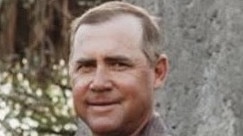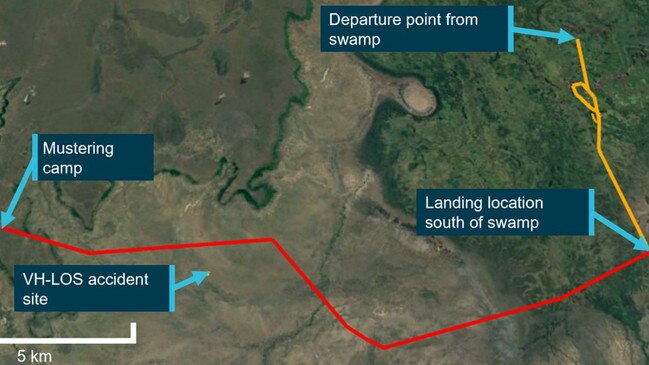Norman Fisher’s last moments before fatal Arnhem Land chopper crash revealed by aviation investigators
The aviation safety watchdog has released its initial findings after a twilight chopper flight cost a beloved Territory cattle musterer his life.

Northern Territory
Don't miss out on the headlines from Northern Territory. Followed categories will be added to My News.
A chopper flight through pitch-black darkness is suspected to have cost a Territory cattle musterer his life, according to an early investigation from the aviation safety watchdog.
The Australian Transport Safety Bureau released its early findings in an investigation into the death of Norman Fisher, who was killed during a mustering operation through the Arafura Swamp, south of Ramingining on November 14, 2022.
The beloved father, who had carved out his own legacy in the Territory grazier and crocodile farming industry, was killed when his Robinson R22 went down over East Arnhem Land.
The ATSB said despite the experienced pilot not being qualified to fly at night, Mr Fisher took off as the last rays of the sunset were dimming over the horizon.
“The pilot was not rated to fly at night, and the helicopter was not equipped for night flight,” the ATSB said.
The initial investigation released on Monday said a multi-vehicle animal mustering operation had just wrapped up a full days work, with the team planning to meet at a mustering camp 20km west of a departure point in the swamp.
Witnesses said Mr Fisher was the last to leave, watching his team drive west before taking off at 6pm.
It was agreed the 47-year-old pilot would pick up another member of the party to the south, but the other musterer ended up driving themselves back to camp after the chopper was 10 minutes late.
After a brief landing at the swampy meeting point, Mr Fisher took off for the mustering camp.

He was the first to arrive at the meeting point right before 7pm, but after nearly half an hour the chopper started up again at 7.21pm, according to flight tracking data.
One minute later the data stopped. Mr Fisher’s last recorded location was still over the camp.
ATSB Director Transport Safety Michael Walker said Mr Fisher likely left the camp just as the last rays of the sunset were dimming over Ramingining, with the last light at 7.27pm.

Despite more than 6000 hours of flight experience, a Commercial Pilot Licence, and a valid Class 1 Aviation Medical Certificate, Mr Fisher was not qualified to fly at night nor was the Robinson equipped for night flight.
When the rest of his team arrived, there was no sight of Mr Fisher or his chopper.
As the hours stretched on the group became increasingly concerned, beginning their search at 9pm.
In the moonless darkness the group were unable to find the wreckage, with Mr Fisher and the helicopter only located the next day following an aerial search.
The destroyed chopper and Mr Fisher’s body was found just 6km from the mustering camp.
Debris scattered the ground for 13m leading up to the wreck, while a rotor blade was thrown 30 from the Robinson R22.
The ATSB has examined the crash site and wreckage, interviewed witnesses from the mustering operations and the search, and collected meteorological data, aircraft maintenance records and pilot records.
Dr Walker said the investigation would further review pilot records, medical information, witness information, and aircraft maintenance and flight records, and further examine the aircraft wreckage, meteorological data, and recorded tracking data.
He said a final report will be released at the conclusion of the investigation.
“However, should a critical safety issue be identified during the course of the investigation, the ATSB will immediately notify relevant parties so appropriate and timely safety action can be taken,” Dr Walker said.





